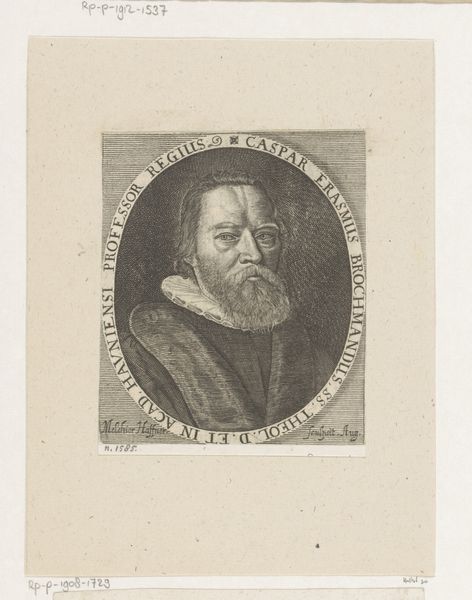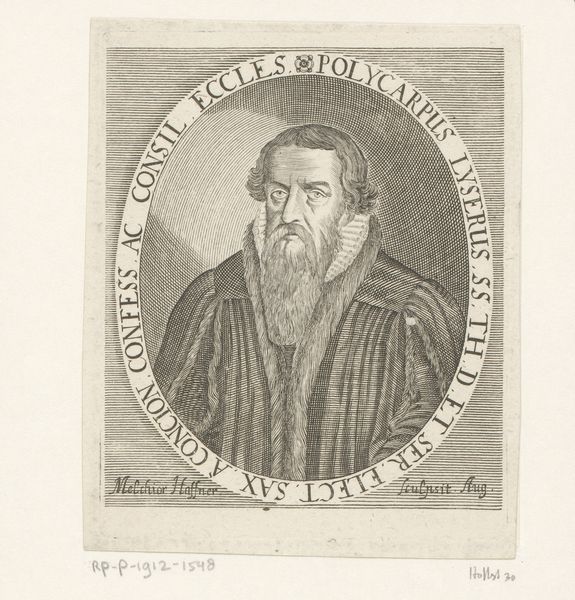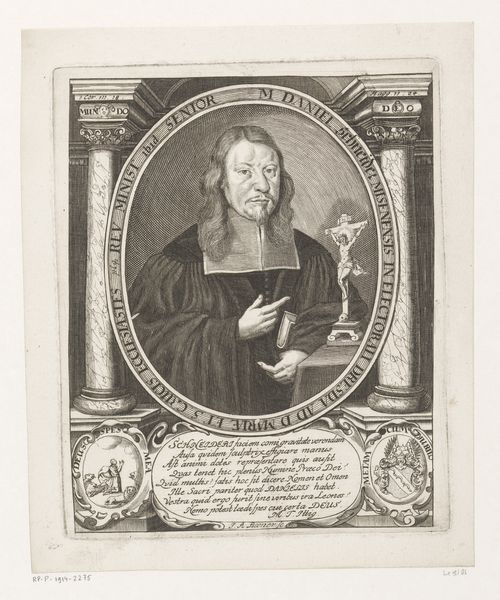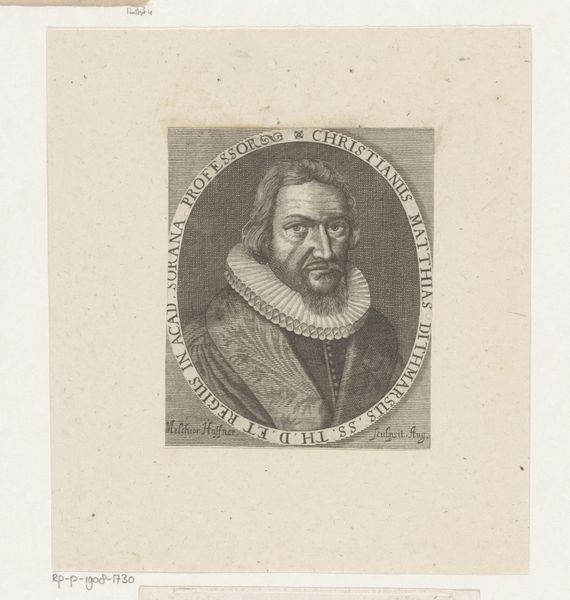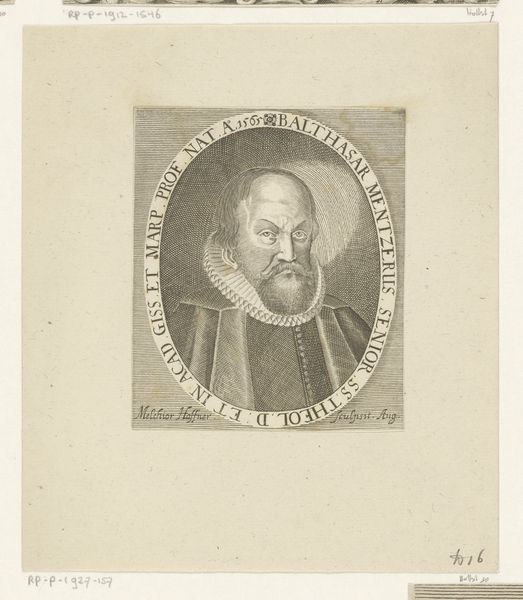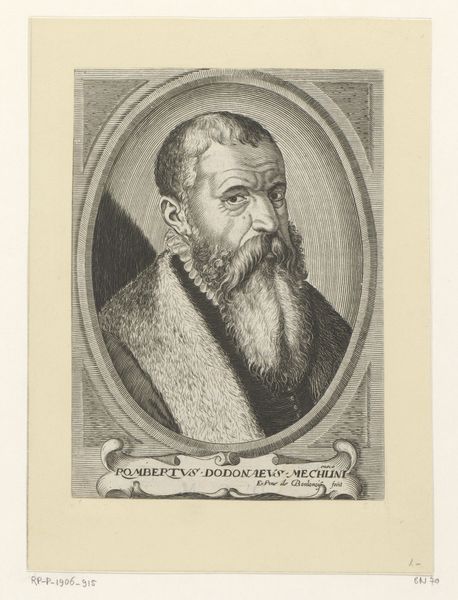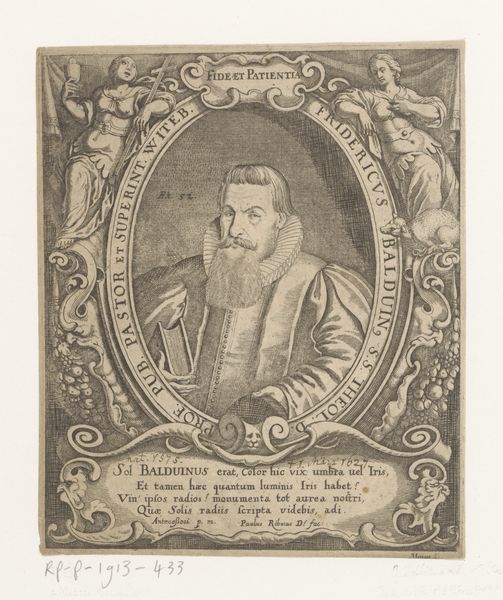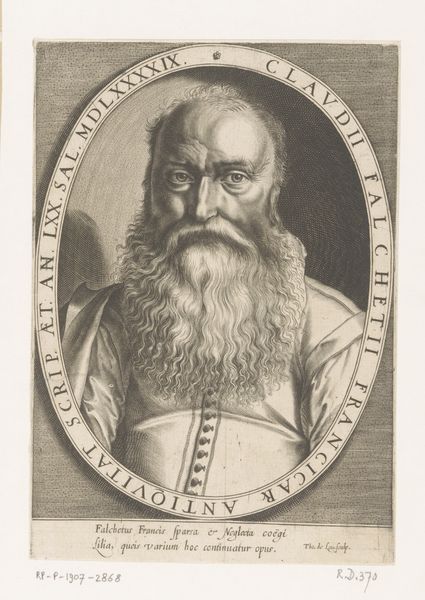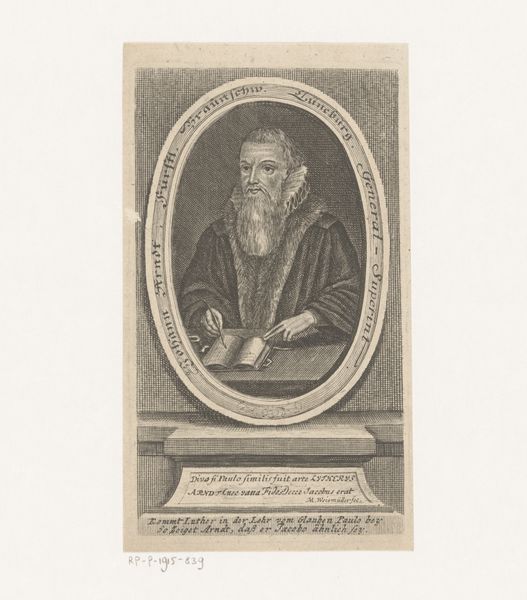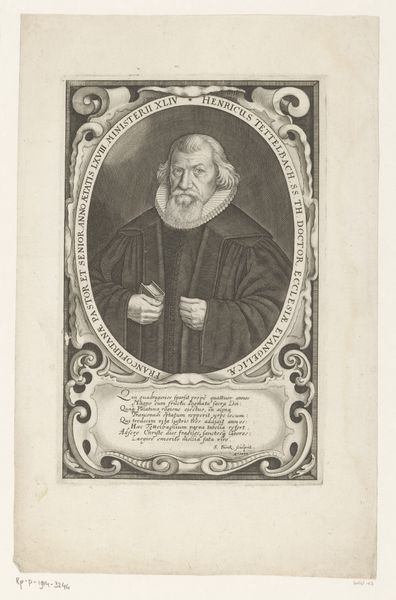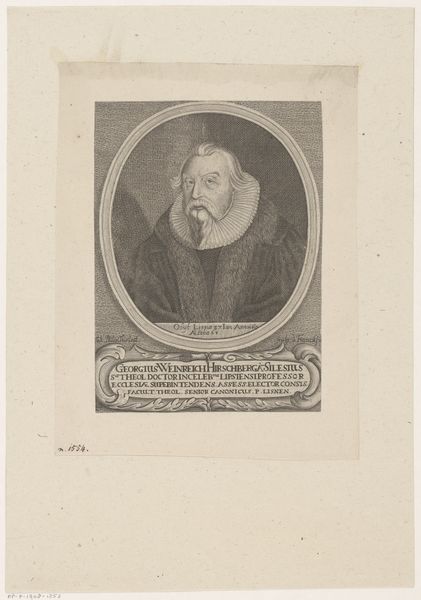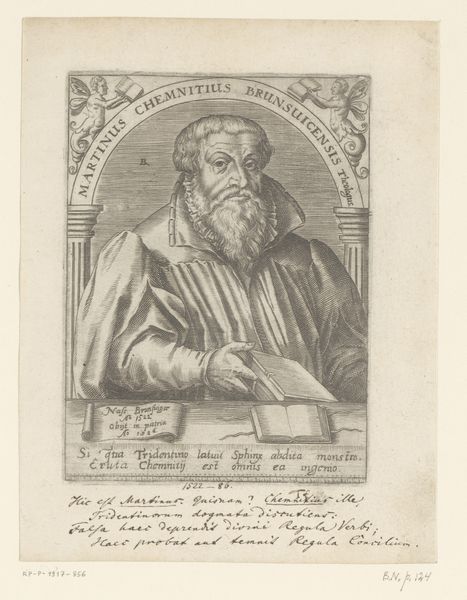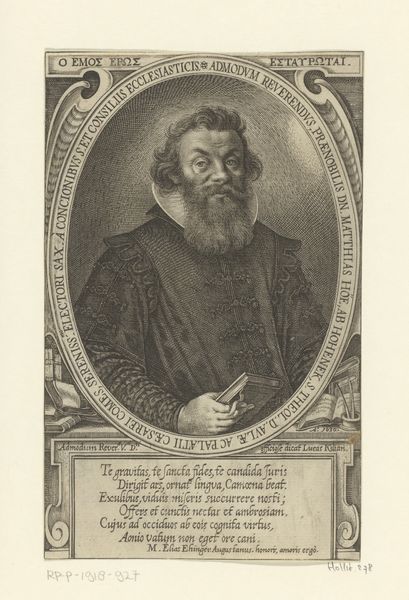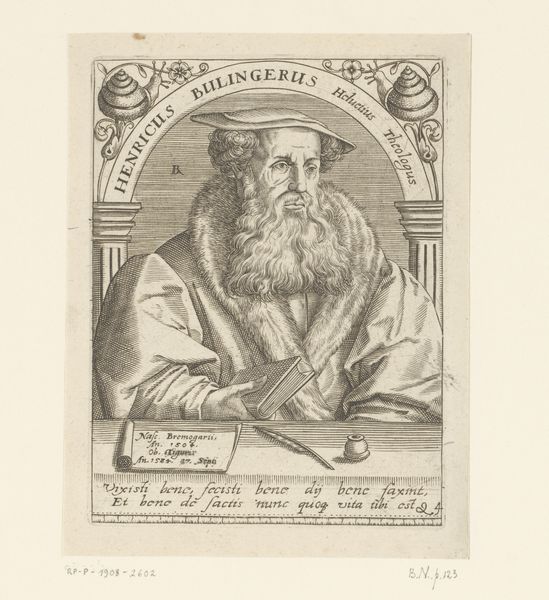
etching, engraving
#
portrait
#
baroque
#
etching
#
engraving
Dimensions: height 109 mm, width 90 mm
Copyright: Rijks Museum: Open Domain
Curator: Here we have a 1673 engraving and etching by Melchior Hafner II, a portrait of Matthias Hoë von Hoënegg. The work is encased within an oval border containing Latin script. What are your initial impressions? Editor: Stark. The intense linearity almost feels like an abstraction until the eye adjusts and registers the portrait. And look at how precisely the lines render such detail in the face. Curator: This piece provides a clear example of Baroque portraiture conventions—aimed to celebrate status and communicate ideals. Hoë von Hoënegg was a prominent Lutheran theologian, and portraits such as this were powerful tools to promote and cement influence during the Reformation. The frame's text directly relates to his roles: "Ecclesiastes," referring to his sermons, and other indications of his status in Saxony. Editor: Indeed. I find myself drawn to the meticulous execution of the beard and hair—such density achieved with those fine, almost delicate, lines. It suggests both intellectual rigor and a sense of almost unkempt energy, doesn't it? Notice also how the artist employs darker, heavier lines to create volume. Curator: Quite right. Consider where this would have been displayed, perhaps in a private collection celebrating intellectual life, reinforcing religious or political allegiance within specific social circles. Etchings and engravings made art and ideas widely accessible. Editor: Looking at it this way highlights how crucial dissemination of these prints were to consolidate ideological forces in this era. I am left with this feeling of carefully managed public persona conveyed through the interplay of detail and symbolic messaging. Curator: It’s fascinating to reflect on how even such detailed artworks could perform as critical nodes within wider cultural and religious dialogues. Editor: Yes, an aesthetic surface deeply intertwined with the turbulent sociopolitical atmosphere of the time.
Comments
No comments
Be the first to comment and join the conversation on the ultimate creative platform.
